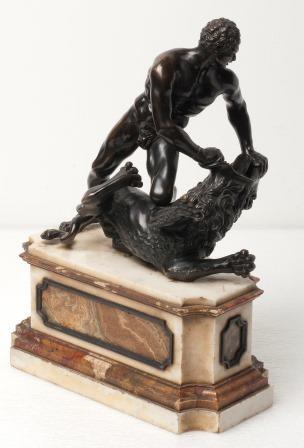Recommendation
Recommendation regarding Herbert Gutmann [1]
In a letter dated 15 June 2009, the Minister for Education, Culture and Science (hereafter referred to as: the Minister) requested the Restitutions Committee (hereafter referred to as: the Committee) to issue a recommendation concerning the application for restitution dated 24 February 2009 submitted by N.P., F.FG., M.MF., C.E.G. and N.M.G. (hereafter referred to as: the applicants). The application for restitution relates to various objects in the Netherlands Art Property collection administered by the State (hereafter referred to as: the NK collection). The current recommendation concerns the following four sculptures:
- NK 2758, Anonymous, Hercules and the Erymantic wild boar, bronze on a white and red marble pedestal, Italy, 19th century, bronze.
- NK 2965, Anonymous (previously attributed to P. Tacca), Faun, France, 19th century, bronze.
- NK 2966, Anonymous (previously attributed to P. Tacca), Faun, France, 19th century, bronze.
- NK 2967, Anonymous, Bust of a Jesuit, Italy, c. 1625, bronze.
[1] The Committee has previously issued recommendations concerning the Gutmann family. For instance, on 6 December 2010, it issued a recommendation concerning a garniture (NK 3223a-e) that was claimed by Herbert Gutmann’s heirs and the heirs of Fritz Gutmann (RC 1.114-A). In addition, the Committee also issued the following recommendations regarding the claims of Fritz Gutmann’s heirs: RC 1.2, RC 1.113, RC 1.114-B.
